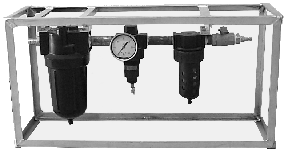Yup - Like I said - "Economic considerations take precedence over safety." IE - the beancounter mentality where they know the cost of everything and the value of nothing!!
Having added a number of different things on pressurized aircraft the design process for poking a hole through the skin is not really that big of a deal - it is done after all for your added GPS units, radio antennas, etc. I somehow don't think that it would actually run into the millions of dollars but it might run into the thousands of them.
Again my point here is simply that until we as an industry decide that the losses are significant enough to demand changes in how safety is actually accomplished rather than just paying lip service to it by doing a mickey mouse "Risk Analysis" and determining that the "Risk is Acceptable" and in fact decide that even 1 death is 1 too many and we as the industry need to improve the existing (Mediocre) standards.
Where do you draw the line???? - Is a $30,000.00 mod to add a camera to the top of a B200 too much considering the least amount of people it could save here in Canada would be 2?? Two pilot aircraft - on a positioning flight scenario. Are you going to tell me and the pilots widows that $15,000.00 each was too much for the company to pay for their ability to check on the condition of the exterior of the aircraft and allow them to make an informed decision?? If we could get the cost down to $5000.00 per pilot would you put it in then??
What actually is the value placed on people in the aircraft???
From the "Plane Crash Attorney" Website
Commercial airline disaster settlements often land on page one in the newspaper because the awards can be very large.
In March, 2008, a record $165 million settlement for the crash of an Air Philippines Flight eight years earlier splashed across the headlines. While it took seven years of litigation to reach the agreed figure which is cited as the largest settlement for an Asian airline accident the compensation awarded to each family of the 103 passengers amounted to $1.5 million per victim.
Charter and private plane disasters tend to produce smaller settlements than commercial airline crashes but not always.
Record small aircraft settlements include the following:
In 2006, a $26 million settlement paid for the wrongful deaths of a couple with eight children following a 1999, North Carolina plane crash (highest aviation settlement in U.S. history for the death of a husband and wife).
In 2005, a $38 million settlement paid to a woman severely injured in a 2001 helicopter crash at the Grand Canyon (highest settlement in U.S. history for helicopter crash injury).
In 2003, a $25-million settlement was agreed to by the air charter company which owned and operated the small plane involved in the 2002 crash deaths of six passengers and the plane’s two pilots. The estate of a Minnesota senator who was killed in the crash -- along with his wife, daughter and three campaign aides -- was the plaintiff.
In 2001, a $27.5 million settlement was reached on behalf of skydivers killed in a 1998
Sure the above is not directed fully at the need for a camera to see what is happening outside the aircraft - but also on the site was this quote that should be cause for some thoughts - the bold emphasis is mine.
Disparity in Airline Liability Law:
Prior to 1997, passengers who held tickets on international flights which crashed could not receive more than $75,000 in damages even if the accident occurred on or over U.S. soil.
After 1997, most airlines agreed that they can be sued for the allowable damage amount in the passenger’s domicile country. Victims or their families only have to show that the airline was negligent in causing their injuries.
The one exemption that airlines use against unlimited damage liability is if the airline can prove it took "all necessary measures" to prevent the damage.
Interesting Facts
The odds that any single person will be involved in a plane crash are about one-in-twenty thousand. However, more than fifteen thousand Americans will be involved in at least some type of aviation accident during their lifetime. If you have been involved in a place accident, notify a personal injury lawyer or place crash attorney.
Approximately 80 percent of all plane crashes occur shortly before, after, or during takeoff or landing. While mid-flight disasters happen, they are rare.
An accident survey of 1,843 aircraft accidents (excluding military, private and charter aircraft) from 1950 through 2006 determined the causes were:
53%: Pilot error
21%: Mechanical failure
11%: Weather
8%: Other human error (air traffic controller error, improper loading of aircraft, improper maintenance, fuel contamination, language miscommunication etc.)
6%: Sabotage (bombs, hijackings, shoot-downs)
1%: Other causes
Are we really "Taking all necessary measures"????
Stay safe,
Mx




